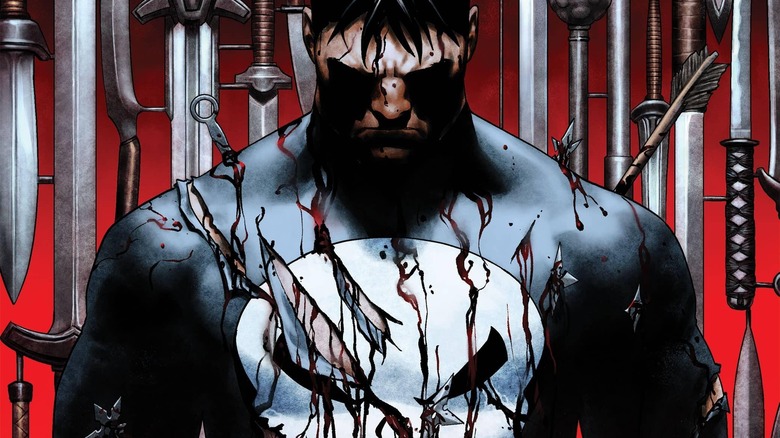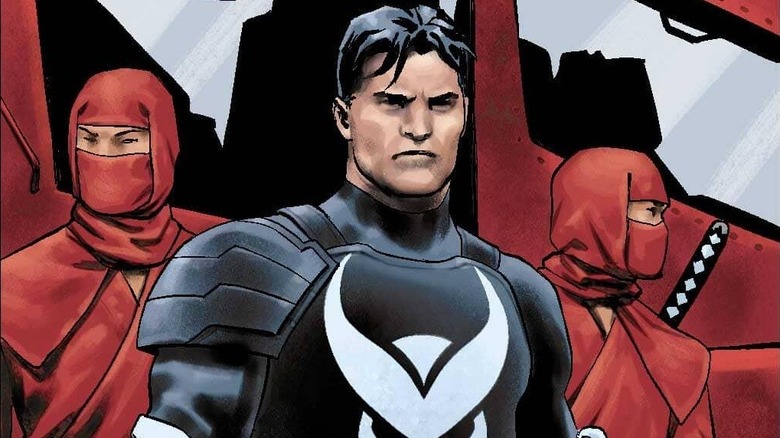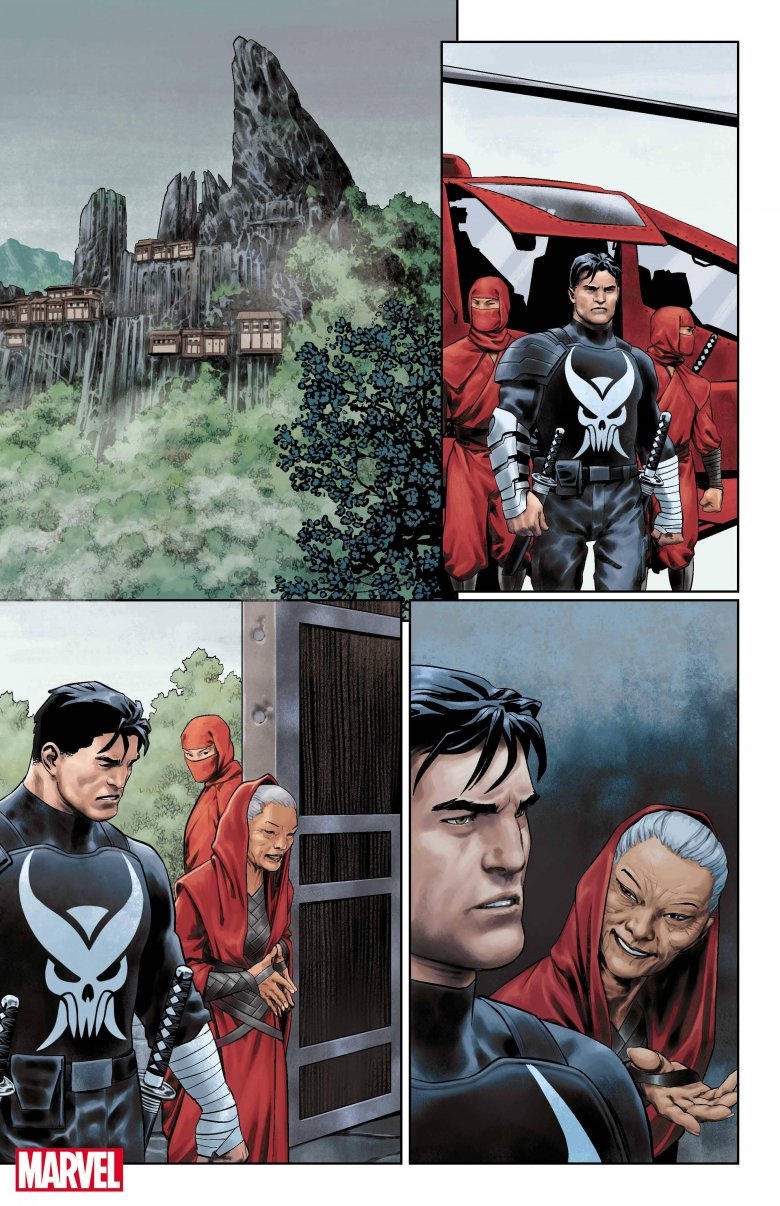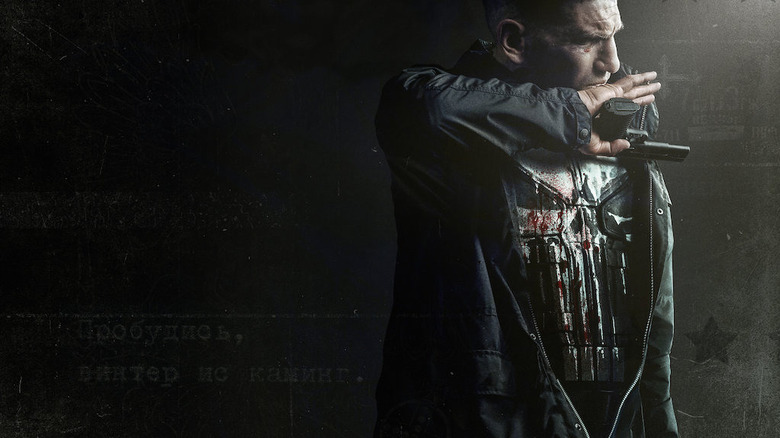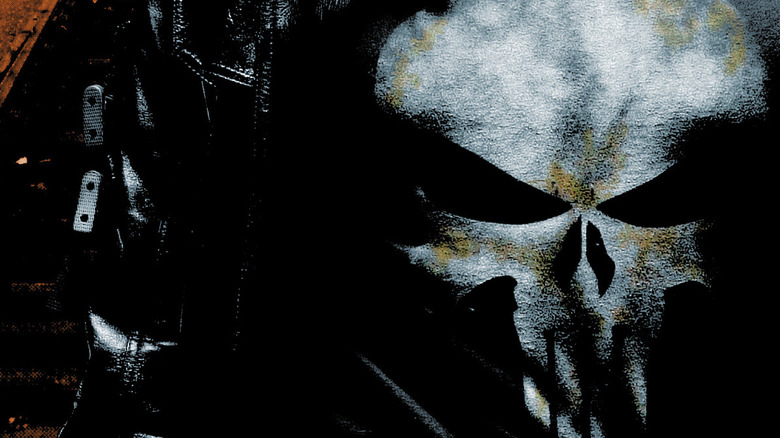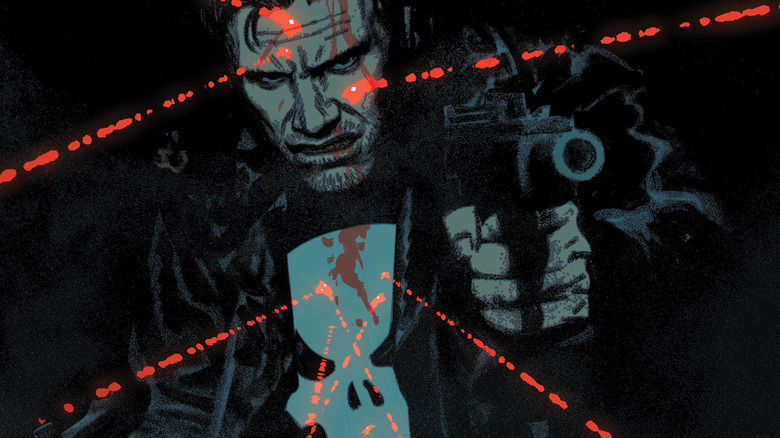The Punisher Is Seemingly Getting A New Logo, And The Timing Feels Right
The comic book-loving community was recently dealt a bit of a big surprise when Marvel Comics announced a new prestige-format "Punisher" series from Jason Aaron ("Avengers") coming our way next year. The book will evaluate Frank Castle's past, present, and future, and it looks like that future might (emphasis on might) involve a new logo, opting to move on from the classic skull that has been a part of the character from the very beginning. This has, understandably, been met with thoughts and opinions of all sorts.
I think we all kinda saw it coming that Marvel would have to rebrand The Punisher in some way because awful people IRL like to take him out of context and use him as a self insert hero figure.
Unfortunately we’re left with this horrible logo now… https://t.co/QqnIxZislP pic.twitter.com/TJP4BrLzS8
— Ollie🎄 (@TheQuiver_) December 20, 2021
Punisher changed his logo because the original has been co-opted by fascists. You know one of those morons is gonna blame the change on cancel culture.
— Rob Van Krampus (@JaimsVanDerBeek) December 20, 2021
Congratulations on ruining the Punisher logo for all of us, racists! pic.twitter.com/2UHb7yDQYz
— Cheryl Lynn Eaton (@cheryllynneaton) December 20, 2021
My thing about the Punisher symbol changing is that it's still the same symbol but now it looks bad lol I'd rather they just scrap it all together or double down on the symbol and make his stories more about killing Nazis and white supremacists.
— Festive Von Doom (@EvanReadsComics) December 20, 2021
That is but a small sampling of what has been said on social media. With this potentially serving as a big change for a beloved character that has real-world implications, we're going to discuss what we know about the book and the new symbol, what the classic symbol represents, the history behind its use by various groups, and why those appropriations are problematic.
The New Book
"Punisher" is being touted as a big deal, with words like "culmination" being thrown around by Marvel, and each issue of the book being oversized during its 13-issue run. A bit of preview art was released, but one piece, in particular, caught everyone's eye, as it features a brand new logo.
As we can see, it appears Frank is working with The Hand, who fans might know from "Daredevil." It appears this affiliation has granted him a new logo instead of his original skull, which dates all the way back to when Punisher debuted in the pages of "The Amazing Spider-Man" #129. For a little more context, here's the synopsis for the upcoming series:
As the Punisher, Frank Castle has become the most accomplished killer the world has ever seen. After a shocking secret pushes him to become the warlord of the Hand, he now serves the Beast, a role he's been fated to fulfill. Tragedy, war, and rage come together as he takes up his sword and his new armor with the most notorious clan of assassins in the Marvel Universe. Will it mean an end for the Punisher? Or a whole new bloody beginning?
Right now, little is being said by way of specifics. Marvel Editor-in-Chief C.B. Cebulski, in a statement, discussed an "evolution" that could hint at what's to come:
"A few years ago, Jason Aaron came into one of our creative summits with a pitch for Frank that made our collective jaws drop. The story Jason is telling – a truly epic tale about darkness, violence, and choices – can only be told with the Punisher at its core. This series will build on Frank's legacy while introducing us to a side of him we've never seen before, setting the stage for an evolution that we'll find was inevitable."
So, while we don't know yet if the new logo is permanent, it does seem like the notion of an evolution and a grand tale could pave the way for major changes to the character and a more permanent makeover. For various reasons, that might make sense.
A History of Violence
Marvel may be known best for characters like Spider-Man and the Avengers, but Frank Castle is a major outlier, as far as the company's widely known characters go. Punisher is a violent, gun-toting killer who operates outside the law. Yes, he has a moral code of sorts, but make no mistake, he's a murderer and not a hero. By Marvel standards, he's incredibly violent and that has been a staple of his character over the years.
Like any major comic book character, things get silly every once in a while (see 2011's "Space Punisher"). but the core of who Frank Castle is remains intact. A man who suffered the death of his wife and children at the hands of the mob. A man who served his country in the armed forces only to have everything taken away from him by criminals who weren't stopped by the proper authorities. A man who is driven by vengeance. This is not Captain America. Heck, it's not even Daredevil. This is about as cold-blooded and close-to-home as it gets in the Marvel universe. Are characters like Thanos more violent on a grand scale? Sure. But something about Frank being street-level makes it hit a little differently.
A Complicated History of Appropriation
The character's motivations are important to understand when looking at how is iconography has been appropriated in the real world. As has been well-documented in the 2000s, various groups such as American military personal, police officers, firefighters, and right-wing militia groups have all, at various points, used the Punisher logo while carrying out their various duties or pushing their agendas. This is, to say the very least of it, problematic, and has led to a lot of controversies, while also putting Marvel (as well as its parent company Disney) in an increasingly precarious position.
While various military personal have used the logo, it got a big boost when Chris Kyle's story was told in Clint Eastwood's blockbuster hit "American Sniper," as he used the symbol during his time overseas. In his autobiography, Kyle explained it thusly:
"We spray-painted it on our Hummers and body armor, and our helmets and all our guns. We spray-painted it on every building or wall we could, We wanted people to know, We're here and we want to f*** with you."
Outside of the military, right-wing groups such as the 3 Percenters have adopted the logo as well, and it was prominently featured at the Unite the Right rally in 2017. Police officers of varying sorts across the U.S. have adopted it as well, and it is particularly popular within the Blue Lives Matter movement. This is unsettling, as it sees those who represent law and order taking on the logo of a character who represents the failures of law and order.
Perhaps most troublingly, the skull emblem was seen several times branded on the clothing of insurrectionists who stormed the U.S. Capitol on January 6, 2021.
A Misunderstanding of The Punisher
The problem is that many of the groups using the logo represent law and order. Or, when we look at the insurrectionists from January 6, they represent criminal actions and senseless violence against innocent people. Jon Bernthal, who played Frank on Netflix's "The Punisher," decried the rioters who adopted the symbol.
I’m with you. Beautiful work. These people are misguided, lost, and afraid. They have nothing to do with what Frank stands for or is about. Big love. J. https://t.co/Q4GpaGW3ek
— Jon Bernthal (@jonnybernthal) January 12, 2021
Marvel even decided to take a stand on the matter in the pages of Marvel Comics back in 2019. In writer Matthew Rosenberg's "Punisher" #13, Frank Castle comes across a couple of police officers who are fans of his work. However, Frank decides to make things abundantly clear to them, essentially stating the company's official opinion on the matter through the character himself:
"I'll say this once, we're not the same. You took an oath to uphold the law. You help people. I gave that up a long time ago. You don't do what I do. Nobody does. You boys need a role model? His name's Captain America, and he'd be happy to have you.... If I find out you are trying to do what I do, I'll come for you next."
Punisher #13 (2019) addressing cops who idolize him (right after peeling off a Punisher skull decal and ripping it up)
It's always seemed weird to me how some cops and soldiers, blue lives matter-types openly idolize a murderer working outside the bounds of the law? pic.twitter.com/RapKP7Dala
— Katie Mummah (@nuclearkatie) June 3, 2020
Anyway, this article helped me understand why you see so many Punisher logos next to blue lives matter stickers, but also like the Punisher himself says, why don't they just idolize Captain America instead?https://t.co/VtbXiAvXAQ pic.twitter.com/YegcEJjhVR
— Katie Mummah (@nuclearkatie) June 3, 2020
There are arguments to be made in favor of changing the Punisher, especially with the gun violence running rampant in the U.S. and the problematic adoption of the character by groups who have no business taking him on as a role model. At the same time, it could be argued that reshaping the character due to real-world factors such as these could be viewed as giving in on some level to far right groups and those who misguidedly appropriate the character for their agendas. It's tricky. That being said, it's easy to see why a gigantic corporation with an image to protect might want to find a way to rebrand the popular character. And, if Aaron can find a story reason to give Frank Castle a makeover, it's not hard to see why that might be an appealing option. Maybe it really is time to move on.
"Punisher" #1 hits shelves in March 2022.
